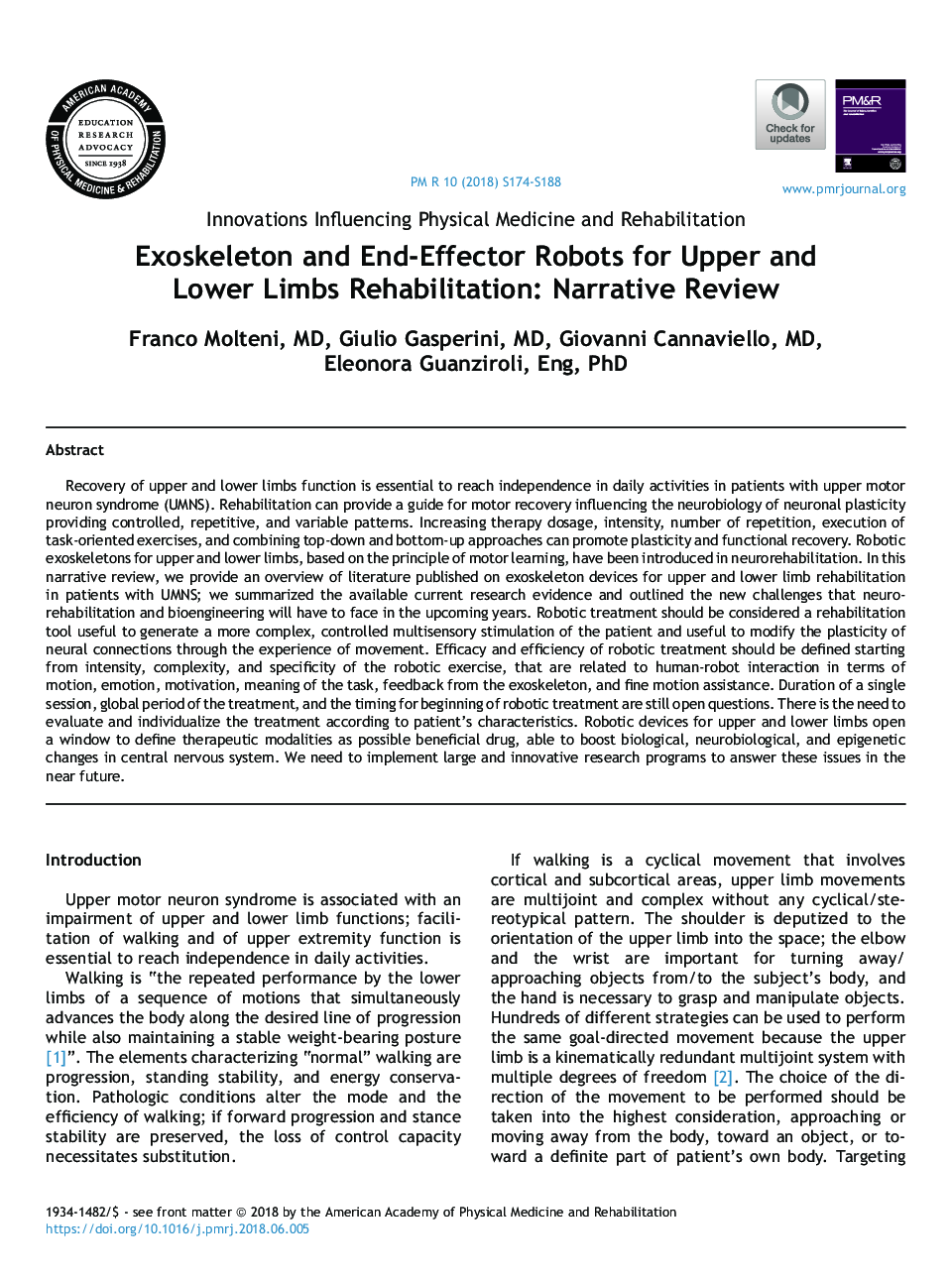| Article ID | Journal | Published Year | Pages | File Type |
|---|---|---|---|---|
| 11019201 | PM&R | 2018 | 15 Pages |
Abstract
Recovery of upper and lower limbs function is essential to reach independence in daily activities in patients with upper motor neuron syndrome (UMNS). Rehabilitation can provide a guide for motor recovery influencing the neurobiology of neuronal plasticity providing controlled, repetitive, and variable patterns. Increasing therapy dosage, intensity, number of repetition, execution of task-oriented exercises, and combining top-down and bottom-up approaches can promote plasticity and functional recovery. Robotic exoskeletons for upper and lower limbs, based on the principle of motor learning, have been introduced in neurorehabilitation. In this narrative review, we provide an overview of literature published on exoskeleton devices for upper and lower limb rehabilitation in patients with UMNS; we summarized the available current research evidence and outlined the new challenges that neurorehabilitation and bioengineering will have to face in the upcoming years. Robotic treatment should be considered a rehabilitation tool useful to generate a more complex, controlled multisensory stimulation of the patient and useful to modify the plasticity of neural connections through the experience of movement. Efficacy and efficiency of robotic treatment should be defined starting from intensity, complexity, and specificity of the robotic exercise, that are related to human-robot interaction in terms of motion, emotion, motivation, meaning of the task, feedback from the exoskeleton, and fine motion assistance. Duration of a single session, global period of the treatment, and the timing for beginning of robotic treatment are still open questions. There is the need to evaluate and individualize the treatment according to patient's characteristics. Robotic devices for upper and lower limbs open a window to define therapeutic modalities as possible beneficial drug, able to boost biological, neurobiological, and epigenetic changes in central nervous system. We need to implement large and innovative research programs to answer these issues in the near future.
Related Topics
Health Sciences
Medicine and Dentistry
Orthopedics, Sports Medicine and Rehabilitation
Authors
Franco MD, Giulio MD, Giovanni MD, Eleonora Eng, PhD,
